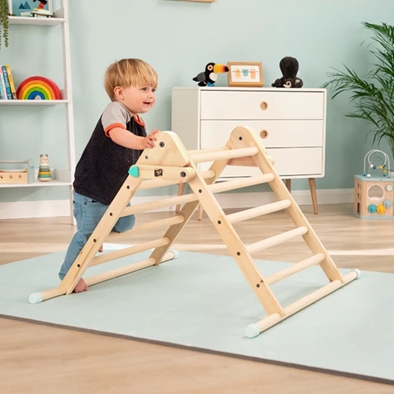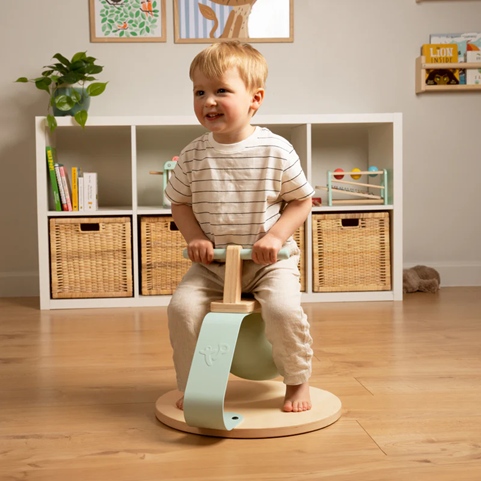Parents’ Ultimate Guide to TikTok
Is your child constantly asking about TikTok? Are you concerned about its safety? With over 1 billion active users worldwide, TikTok has become one of the most popular apps among kids and teens. But with all the buzz, you might be wondering—what exactly is TikTok, and is it safe for your child?
This guide will give you a clear understanding of what TikTok is, how it works, and what you should know as a parent in 2024.
What Is TikTok?
TikTok is a social media app that allows users to create, share, and discover short-form videos, usually set to music. The app is full of creative content, including lip-syncing, dance videos, challenges, and more. Users can easily scroll through an endless stream of videos on their “For You” page, which is personalized based on their interests and interactions.
How Does TikTok Work?
TikTok users create videos by recording themselves with the app’s camera, adding music or sounds, and using a variety of filters and effects. Videos can range from 15 seconds to 3 minutes in length. Once created, these videos can be shared with followers, on the user’s profile, or even sent to other social media platforms.
TikTok’s algorithm is known for its ability to serve content tailored to each user’s preferences. If your child likes videos about animals, they’ll likely see more animal videos. This can be both a fun and addictive experience.
Who Uses TikTok?
TikTok is especially popular among younger audiences, with a significant portion of its users aged 10-19. Despite TikTok’s age requirement of 13 years, many younger kids find ways to access the app by entering a false birth date during signup. This can expose them to content that may not be appropriate for their age.
Is TikTok Safe for Kids?
TikTok can be safe for kids if used responsibly and with proper supervision. The app has built-in safety features, but there are still concerns regarding inappropriate content, online predators, and data privacy.
Inappropriate content is a big worry. Even though TikTok’s community guidelines prohibit obscene or abusive content, some videos that aren’t suitable for younger viewers can slip through. Parents should be aware that TikTok contains videos with profanity, suggestive themes, and explicit lyrics.
How Does TikTok Protect Young Users?
TikTok has specific settings for younger users. Accounts for kids aged 13-15 are private by default, meaning only approved followers can view their videos. Direct messaging is also restricted, and videos from these accounts can’t be downloaded.
Parental controls are available through the Family Pairing feature. This allows you to link your TikTok account with your child’s to manage their screen time, restrict certain content, and control direct messaging. These settings are crucial for helping to protect your child from unwanted interactions and harmful content.
Some families use a VPN (Virtual Private Network) to enhance privacy and security while browsing online, including on apps like TikTok. A VPN can add an extra layer of protection by masking your child’s location and keeping their data more secure, which is especially useful when traveling or using public Wi-Fi. If you choose to use a VPN, it’s good to make sure that your child understands how it works and how it can be part of staying safe online.

Photo by Solen Feyissa on Unsplash
What Are TikTok Challenges?
TikTok challenges are viral trends where users recreate a specific action or dance. While many of these challenges are harmless fun, like dance routines or playful pranks, others can be dangerous. For instance, the “Blackout Challenge” involved holding one’s breath until passing out, which led to serious injuries.
It’s essential to talk to your child about these challenges and encourage them to think critically about what they choose to participate in. Ensure they understand the difference between fun trends and those that pose real risks.
Does TikTok Affect Mental Health?
TikTok’s impact on mental health can be concerning. The constant need for validation through likes and comments can lead to anxiety, low self-esteem, and unhealthy comparisons. Negative comments or cyberbullying are also common on social media platforms, including TikTok.
Encouraging your child to use TikTok in moderation and reminding them that online validation isn’t everything can help mitigate these effects. It’s also a good idea to monitor their emotional well-being and have open discussions about any negative experiences they may encounter on the app.
How Does TikTok Handle Data Privacy?
TikTok collects user data like most social media apps. This includes information about the content your child watches, their location, and their interactions on the app. Concerns have been raised about how this data is handled, especially since TikTok is owned by a company based in China.
If you’re worried about privacy, ensure your child’s account settings are as secure as possible, and consider discussing the risks of sharing personal information online.
Should My Child Use TikTok?
Whether your child should use TikTok depends on their age, maturity, and your family’s values. If you decide to allow TikTok, make sure to set up the account together, adjust the privacy settings, and talk about the potential risks and responsibilities.
Remember, you can always change your mind. If TikTok seems to be having a negative impact, it’s okay to limit or remove access to the app.
FAQs
- What age is TikTok recommended for?
TikTok is officially recommended for users aged 13 and older. However, experts suggest that 15+ might be more appropriate due to the nature of the content and privacy concerns.
- Can I monitor my child’s TikTok activity?
Yes, through the Family Pairing feature, you can link your account to your child’s and monitor their activity, set time limits, and restrict certain content.
- What should I do if my child encounters inappropriate content?
Report the content immediately through the app’s reporting feature. You can also enable Restricted Mode to reduce the likelihood of encountering such content.
- Is TikTok addictive?
TikTok can be addictive due to its endless stream of engaging content. Setting time limits and encouraging breaks can help manage this.
- How can I make TikTok safer for my child?
Make sure their account is private, monitor their activity, use the Family Pairing feature, and have open discussions about online safety and responsible use.










